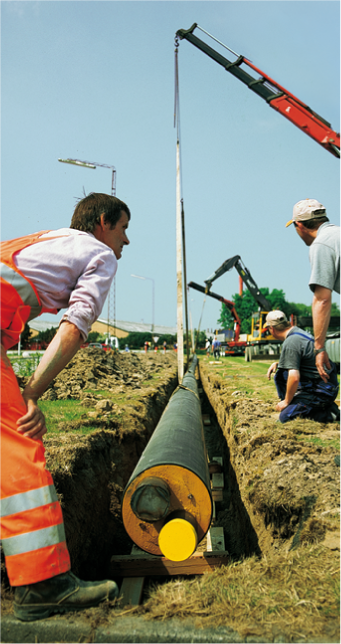3.4.3 Which form of CHP is best?
There are many possibilities for CHP. Which is best is a matter of location and trade-offs of cost and performance. Generally, the larger the CHP unit, the higher the electricity generation efficiency, the lower the capital costs per kW of capacity and the lower the maintenance costs per kWh of electricity produced.
The distribution of heat from larger CHP units and large power stations requires extensive networks of district heating pipes (Figure 36).

The technical potential for CHP with district heating in the UK is large, but it has had to compete with rival cheap natural gas. However by 2050 the twin problems of declining North Sea gas production and of reducing national CO2 emissions will mean that the use of natural gas boilers will have been phased out. Alternative methods of heating buildings will have to be found, either through the use of heat pumps or a gas grid based on hydrogen.
A 2005 International Energy Agency report (IEA, 2005) modelled the heating needs of a European city of about 250 000 inhabitants (based on Leicester). It compared different forms of CHP with a base case of using individual condensing gas boilers and electricity from new, high-efficiency CCGT plant. It concluded that the least-cost solution, and the one with the largest CO2 emission savings, was city-wide CHP using heat and electricity from a CCGT power station. However, this leaves many buildings in suburban areas for which individual small CHP units (or possibly electric heat pumps) may well be the best solution. If small fuel cell CHP units can be produced with high efficiencies and low maintenance costs then these could become serious challengers to city-wide CHP.
The costs of district heating networks are high, but then so are those of rival technologies such as heat pumps. If suitable low interest finance were available it could be economic to extend district heating to between 3.3 and 7.9 million UK households (mainly in dense urban areas), including 16–26 million m2 of commercial floor space. This would represent between 6% and 14% of the UK heat demand (Pöyry, 2009)
